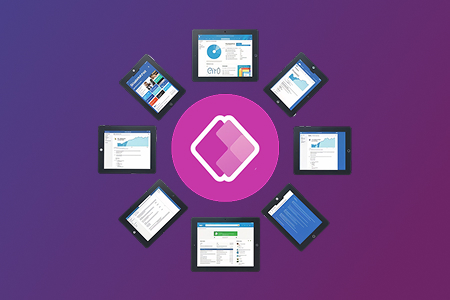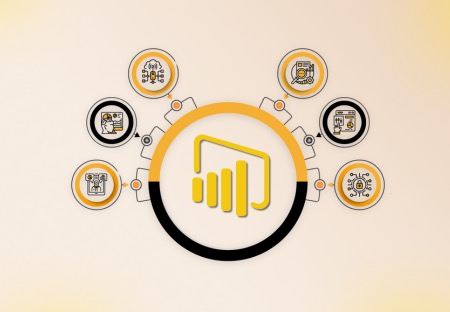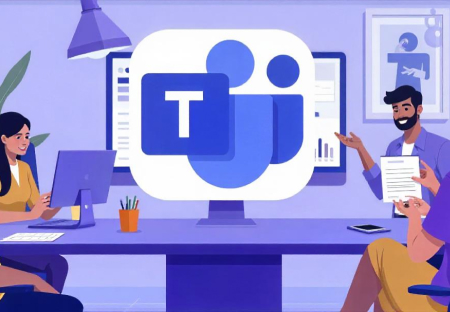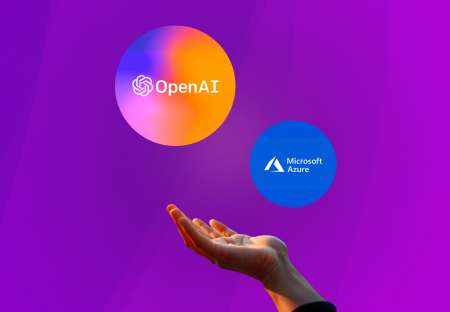The mass proliferation of mobile technology has made the adoption of web applications easier than ever before. However, the increased complexity has created a complex web of interdependencies and communication between apps that can negatively impact application performance and security.
The modern application portfolio is not only responsible for improving business efficiency, but also for driving innovation within your organization.
The global application modernization services market size is expected to reach USD 24.8 billion by 2025, with a CAGR of 16.8%. This article explores five key issues that you must address when modernizing your application portfolio or re-platforming existing ones.
The Problem with Overgrown Application Portfolio
The failure to retire, replace, consolidate, or modernize overgrown application portfolios is the primary issue. A set of applications that the business previously deemed essential is occupying valuable resources. These resources could be more efficiently utilized elsewhere in the organization. This issue relates not only to financial costs but also to the time and effort required to maintain these systems. This could be easily eliminated or replaced with newer technologies.
The good news is that by rethinking how you manage your applications portfolio (re-platforming), you can reduce costs while improving efficiencies for all parts involved in running those apps day to day: from developers using them to users accessing them via mobile devices; from IT staff maintaining those applications across various platforms like Microsoft Azure cloud service instances running Linux virtual machines
Understanding the Sprawling Web of Interdependencies Application Portfolio
The first step to making your application portfolio more manageable is understanding the interdependencies between applications. In other words, how can you tell which applications depend on other applications?
Identify the most important applications. The first thing to do when trying to determine what will be in your portfolio is to identify which apps are critical for your business. Therefore must remain in place as part of your company’s system today (and tomorrow).
This includes all the tools used every day by employees at all levels throughout the organization. It does not only refer to “frontline” workers but also to everyone from executives down through middle managers and even IT staff members who run day-to-day operations like HR or finance departments, so they can effectively do their jobs.
Identify the least critical ones but only after determining exactly why they’re there. Many companies fail to realize the amount of time they spend on programming code until someone comes along and tells them that there is no real value being added. It may seem obvious, but it is essential to ask yourself “why?” during each phase of trying out new features and keep this question in mind before making any changes.
Assessing Value of Application Portfolio
You must identify which applications are no longer used, relevant, secure, and cost-effective. To achieve this, you can review your portfolio of applications. Determine whether they are still in use or have been replaced by newer technologies. They offer better functionality than the old ones. This will enable you to make informed decisions about what needs to be re-deployed or migrated into new environments.
Re-Platforming and Modernization to Streamline Operations
While modernizing and re-platforming your application portfolio may be costly, it will ultimately help you streamline operations. Simplifying the number of applications supported on one platform can reduce costs and simplify processes.
Furthermore, modernizing and re-platforming can help reduce complexity by reducing the number of systems used by various departments within an organization. Additionally, modernizing and re-platforming can help clarify which applications require maintenance or updates to comply with new regulations or standards, such as PCI DSS 2.0. This process can also reduce complexity by minimizing the number of systems used by various departments within an organization.
Nearly 60% of organizations surveyed have more than 100 apps, while 15% own over 1000 applications.
The problem with having too many applications is that it’s hard to manage, maintain and monetize them. Nearly 60% of organizations surveyed have more than 100 apps, while 15% own over 1000 applications. This means that many organizations are spending time on managing their app portfolio. Ensuring they can generate a reasonable return on investment (ROI).
Conclusion
Understanding the problem of overgrown application portfolios is a critical step that organizations need to address. The second step is to determine how to modernize and streamline the applications in your portfolio. We’ve looked at some of the challenges that IT teams face. When trying to rationalize their application portfolios, but they don’t need to be insurmountable. There are many ways organizations can modernize their apps and make them more secure while improving efficiency.
Learn More: Application Modernization Services of Metaorange Digital










